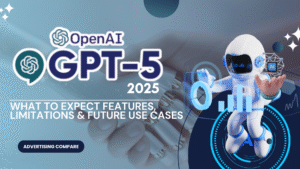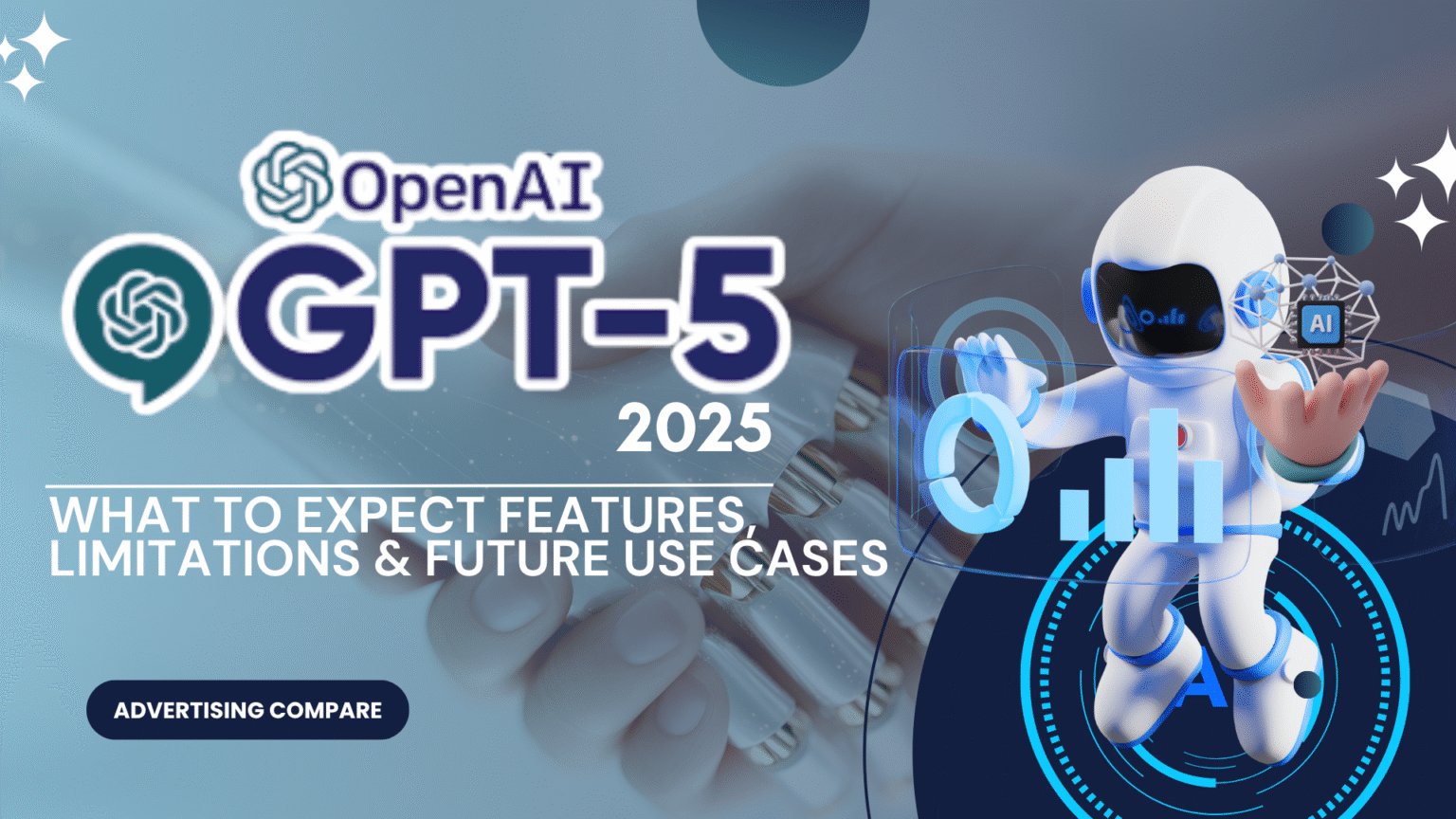Artificial Intelligence continues to redefine how we communicate, create, and problem-solve, and at the center of this revolution is OpenAI’s evolving language model technology. While ChatGPT-5 has not officially launched as of mid-2025, the ongoing development and anticipation surrounding it are significant. Understanding ChatGPT-5’s future use is essential as AI continues to integrate into daily work, education, and business workflows.
Whether you’re a student, researcher, developer, or business professional, understanding the potential of ChatGPT-5 helps you prepare for the next wave of AI innovation.
What Is ChatGPT-5?
ChatGPT-5 is expected to be OpenAI’s next-generation language model, building upon GPT-4 and GPT-4-turbo. While official details are limited, it’s anticipated to offer more advanced capabilities in reasoning, memory, multimodal input, and customization. If GPT-4-turbo is a stepping stone, ChatGPT-5 may represent the maturity of AI that understands context deeply, handles multiple input types more accurately, and responds with higher semantic clarity.
Based on current trends, ChatGPT-5 will likely offer:
- Improved multimodal understanding (text, images, code, documents)
- Better long-term memory and user personalization
- Enhanced real-time web browsing, coding, and image editing tools
- Extended context windows, likely beyond 128,000 tokens
- More accurate, natural, and context-aware conversations
Expected ChatGPT-5 Features in Future Use
1. Advanced Multimodal Capabilities
Building on the image-processing and file-reading capabilities of GPT-4-turbo, ChatGPT-5 is likely to fully integrate multimodal functionality. This includes seamless interaction with:
- Text
- Images
- Diagrams and charts
- PDFs and Word documents
- Programming code
This will allow users to upload mixed media and interact with the AI more naturally. For example, a user might drop in a chart and ask for trends, or upload a research paper and request a summary by section.
2. Persistent and Contextual Memory
Persistent memory is one of the most anticipated upgrades in ChatGPT-5. When enabled, this memory will allow the AI to:
- Recall past conversations
- Understand your tone and preferences
- Track ongoing projects and objectives
- Customize communication style automatically
The memory feature can be toggled off for privacy, making it user-controlled but contextually powerful.
3. Extended Context Handling
ChatGPT-5 is expected to support even longer context windows. GPT-4-turbo already processes up to 128,000 tokens, which is approximately 300 pages of text. GPT-5 may push this further, enabling:
- Legal document analysis
- Book summarization
- Multi-part project workflows
- Complex debugging sessions
This would eliminate the need for chunking long documents into smaller pieces during interactions.
4. Real-Time Tool Integration
ChatGPT-5 is likely to integrate enhanced versions of:
- Python Code Interpreter – for advanced computations, data visualization, and simulations
- DALL·E – for generating and editing images based on prompts
- Live Browser – to fetch current events, check pricing, or explore market trends
- Document Analysis – extract tables, summarize, or restructure uploaded files
This suite of tools turns ChatGPT-5 into a full-fledged productivity platform.
5. Deeper Personalization via Custom Instructions
In ChatGPT-5, personalization will likely evolve further. Users can define:
- Preferred tone (e.g., formal, instructional, or conversational)
- Response format (e.g., bullets, narrative, or report-style)
- Domain focus (e.g., business, academic, technical)
- Skill level (e.g., beginner-friendly or expert-level language)
The ability to shape how the AI communicates will help different user types—from students to data scientists—get more relevant responses.
Comparison: ChatGPT-4 vs. ChatGPT-5 (Expected)
| Feature | ChatGPT-4 (Turbo) | ChatGPT-5 (Expected) |
|---|---|---|
| Input Types | Text + basic image input | Full multimodal interaction |
| Token Limit | Up to 128,000 | Possibly extended to 200,000+ |
| Memory | Selective & basic | Persistent and contextual |
| Real-Time Tools | Yes (code, browser, DALL·E) | Expanded, faster, more accurate |
| Personalization | Basic settings | Deep user profiles and learning |
ChatGPT-5 Real-World Features and Future Use Cases
1. Education and Academic Research
Students and researchers will benefit immensely from ChatGPT-5’s ability to:
- Summarize long research papers
- Create outlines and thesis structures
- Translate complex content into simpler terms
- Generate quiz questions for test prep
- Understand diagrams and academic visuals
With long-context handling, entire dissertations could be processed and restructured in one session.
2. Software Development and Engineering
ChatGPT-5 will likely support developers by:
- Writing and explaining code snippets
- Debugging errors with step-by-step analysis
- Refactoring old codebases
- Converting logic between languages
- Integrating APIs and generating test cases
If the code interpreter is improved, it may act as a full-scale dev assistant.
3. Marketing and Content Strategy
Digital marketers and copywriters can use ChatGPT-5 to:
- Draft SEO-rich blog posts and landing pages
- Analyze competitors in real-time
- Generate personalized ad copy
- Automate social media scheduling
- Design creative visuals via DALL·E prompts
Its multitool ecosystem makes it a content engine as well as a strategist.
4. Legal and Policy Writing
Legal professionals may rely on ChatGPT-5 to:
- Draft contracts, NDAs, and policy papers
- Identify inconsistencies in multi-clause documents
- Translate legal jargon into plain English
- Analyze regulatory text quickly and accurately
Long-form document analysis becomes especially powerful with memory and advanced reading comprehension.
5. Daily Productivity and Automation
For everyday users, ChatGPT-5 becomes a digital assistant to:
- Manage reminders, calendars, and to-do lists
- Plan travel and create itineraries
- Draft resumes, emails, and formal documents
- Organize and label uploaded files
- Perform quick calculations or research
This hands-off productivity can help both students and professionals streamline their lives.
Security & Privacy Considerations
With more memory and deeper personalization, privacy becomes a key concern. OpenAI is likely to enhance:
- Memory Controls – Allowing users to disable or reset memory anytime
- Session Privacy – Giving users the option to interact without saving history
- Data Handling Transparency – Clear documentation on how uploaded files are processed
Users dealing with confidential data (legal, academic, or business) should exercise caution and consider additional privacy layers.
Limitations to Keep in Mind
While expectations for ChatGPT-5 are high, several limitations will likely remain:
1. Prompt Dependency
Clear, specific prompts still drive the best outcomes. Broad or vague instructions may yield unhelpful results.
2. Hallucination Risk
The AI might still present information confidently that is false or outdated, especially when browsing is turned off or unavailable.
3. Ethical Boundaries
ChatGPT-5, like its predecessors, will likely avoid:
- Giving medical diagnoses
- Offering legal judgments
- Providing financial advice
This helps prevent harm but may restrict certain professional use cases.
4. Limited “True” Understanding
Despite more advanced processing, ChatGPT-5 will remain a predictive model, not a conscious or reasoning entity.
5. Visual Interpretation Limits
Although image analysis will improve, it’s unlikely to match human-level understanding for detailed or ambiguous visuals.
Tips to Maximize ChatGPT-5 Effectiveness
- Be specific: Include goals, desired format, and background in your prompt
- Use follow-ups: Treat ChatGPT like a collaborator; refine and redirect as needed
- Combine inputs: Upload files, charts, or code for more contextual answers
- Enable memory: If available, use it to maintain long-term relevance
- Fact-check outputs: Particularly for professional, financial, or legal material
Who Will Benefit Most?
ChatGPT-5 is expected to be useful across roles:
- Students: Study support, academic writing, and learning assistance
- Professionals: Content creation, documentation, data analysis
- Developers: Coding help, automation, logic explanation
- Marketers: SEO, campaigns, visual content, competitive analysis
- Researchers: Deep context handling for studies and reports
Is ChatGPT-5 Worth the Investment?
Assuming similar pricing ($20/month for ChatGPT Plus), ChatGPT-5 is likely to deliver:
- Multimodal access (text, image, code)
- Persistent memory
- Live browser, code interpreter, and image tools
- Long document analysis
- Personalization and formatting options
For creators, developers, students, and strategists, this represents exceptional value.
Conclusion
ChatGPT-5, even before its official release, is generating substantial excitement due to its potential to transform communication, productivity, and creative workflows. From its expected multimodal fluency to memory-powered personalization, it promises to be one of the most powerful AI models to date.
As AI continues to evolve, tools like ChatGPT-5 won’t just assist—they will become core extensions of how we learn, build, and create. Whether you are preparing academic reports, writing code, or running a business, understanding ChatGPT-5: what to expect, features, limitations & future use cases will help you stay ahead of the curve in the AI-powered era.


